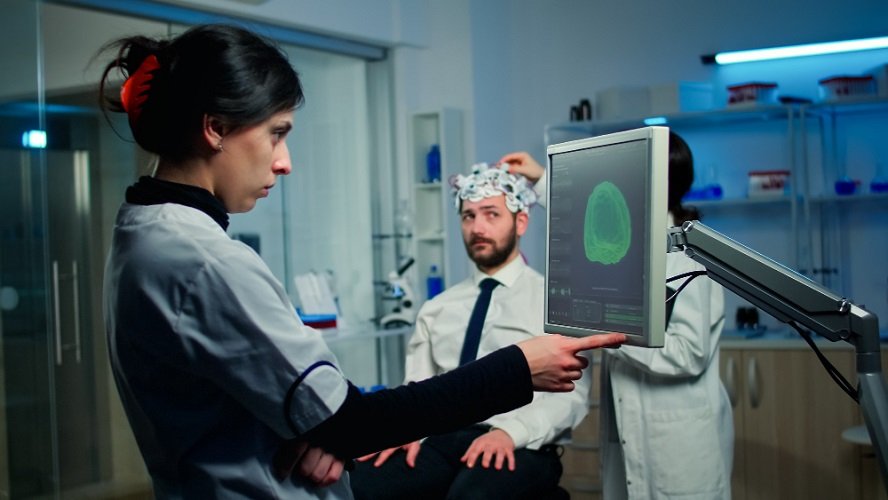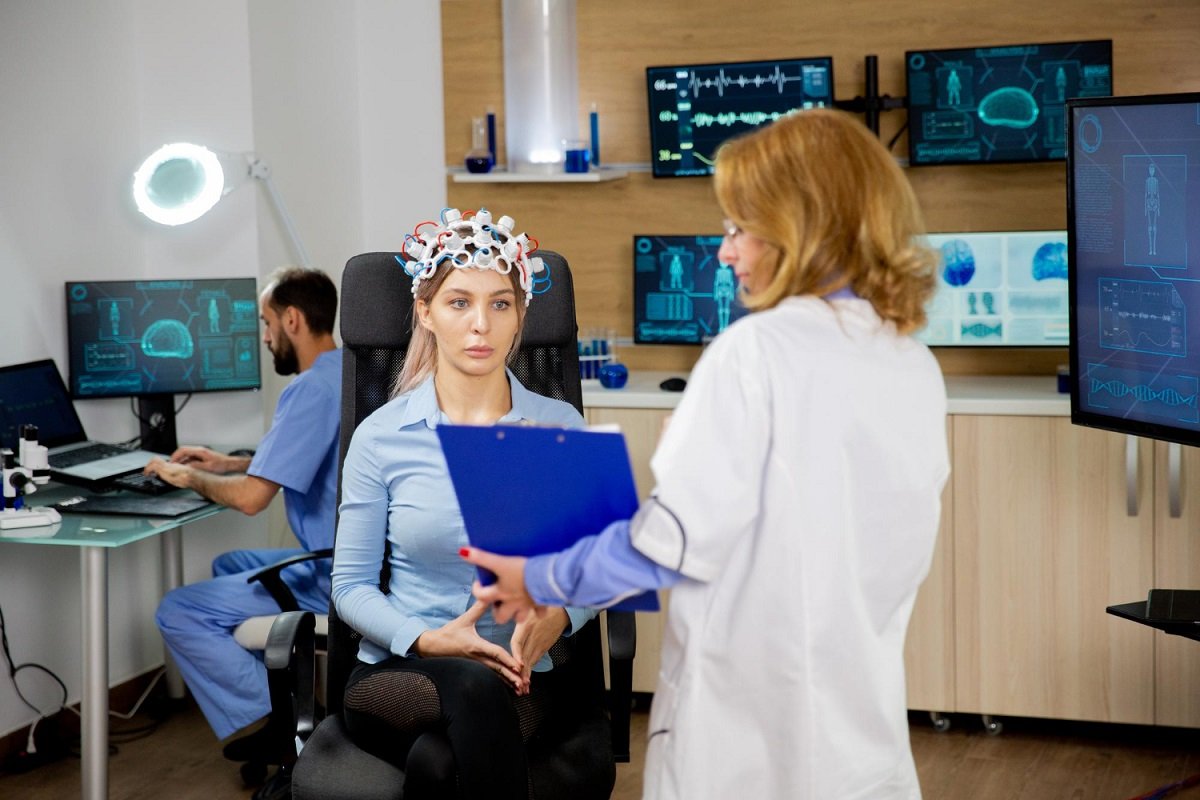Explore how EEG is revolutionising the treatment of mental health disorder with technology for monitoring and personalizing psychiatric treatment.
EEG as a technology, is as old as the fifties, although the modern version claims roots in the nineteenth century, used in monitoring pathology of the brain particularly epilepsy. However, utilization has lately shifted into the psychiatric care of managing mental health disorders in patients.
Doubling as a form of diagnosis, as well as a tool to monitor and treat psychiatric disorders effectively, the use of online EEG has enhanced assessment, care andcontrol by affording more accurate, real time data on the state of the human brain. This technology is aiding mental health professionals in the diagnosis of psychiatric diseases at personal levels, and therefore contribute to more effective treatment.
To make this blog more understandable, the articles to be reviewed are as follows: This article discusses how real-time EEG monitoring is currently implemented in psychiatric care, as well as how it is utilized and what potentials are seen for its further development.
What is Real-Time EEG Monitoring?
Time-based EEG monitoring implicates the process of conducting the brain activity records with sensors affixed to the scalp. These sensors are developed to record electrical activity produced by neurons in the human brain and convert them into wave form.

The scope of applications was initially rather narrow, primarily being limited to short time segments in traditional settings and mainly restricted to detecting acute neurological abnormalities. They have however sparked sustained and real time EEG monitoring thus offering dynamic characteristics of how the brain operates over a prolonged period.
In psychiatric care, real time EEG can monitor tracking of changes in the brain activity during certain episodes of depressive, anxious or panic states. The advancements in terms of making and recording brainwave designs are enabling psychiatrists to evaluate and handle psychiatric disorders with improved accuracy in a real-time mode, based on their trusty EEG devices.
Related: How EEG Technology is Revolutionizing Brain-Computer Interfaces (BCI)
The Role of EEG in Psychiatric Care
Mental illness like depression, anxiety, bipolar, schizophrenia, one may mention that is quite challenging to diagnose as well as to treat them effectively due to their nature. Symptoms may differ significantly across patients and prior conventional approaches to diagnosing involved face-to-face questions, ratings based on patient’s experiences, or questionnaires. While other methods used in diagnosing the disorders may be more subjective to interpret, authorization of EEG monitoring presents an opportunity to collect ‘‘objective’’ data on the brain’s electrical communication talents of the brain in relation to the disorders.
In psychiatric care, EEG monitoring can be used to:
- Identify Abnormal Brain Patterns: Mental health disorders are normally characterized by abnormal electrical activities in the brains. Continuous EEG can useful to identify abnormalities which may correlate with certain psychiatric disorders and provide better diagnosis.
- Track Treatment Responses: Basic video-EEG can be useful to establish when a patient’s brain is reacting to psychiatric interventions like medications, psychotherapy, or certain neurostimulation methods. This provides the opportunity to make modifications to the treatment process according to the corresponding activity in the patient’s brain.
- Personalized Treatment: Perhaps one of the most important benefits of real-time EEG monitoring is the capacity to tailor existing treatment options. When diagnosing every patient, psychiatrists can look for specific abnormities in the patient’s brainwave that only indicate certain type of responses, thus allowing treatments to be individually focused.
Related: NMN Supplements: Benefits, Side Effects, Guide to Buy
Applications of Real-Time EEG Monitoring in Psychiatry
The described approach of real-time EEG monitoring is already making vast progress in several domains of psychiatric practice. Below are some of the ways this technology is currently being used:
1. Diagnosis of Mood Disorders
Depressive and bipolar disorder fall under the group of mood disorders, and they are some of the hardest illnesses to diagnose correctly. There are many diagnostic techniques traditionally used that are qualitative in nature that include questionnaires and interviews. Since EEG monitoring is an objective measurement, a significant finding in the brain activity of patients suffering from mood disorders can be identified. For example, work has been done which confirmed disruption of alpha wave activity in cases of depression and specific differences of rhythm activity in depressive and manic states of bipolar affective disorder. It is hypothesized that through real-time EEG monitoring, psychiatrists are able to get a better view on such patterns to make correct diagnosis.
2. Monitoring Anxiety and Panic Disorders
This is normally defined by excessive, prolonged worry and fear. All of the participants successfully completed the EEG monitoring in which clinicians are able to see changes in brainwave patterns during anxiety episodes, specifically in the beta frequency band linked to increased arousal. Tracking these brainwaves during the state of anxiety or panic could in fact help psychiatrists find certain primary sources of cause and adapt an approach to therapies. Furthermore, constant surveillance reveals whether the applied treatments, including CBT or medication, are still useful in decreasing the amount of anxiety-related brain waves.
Related: How to Promote Breast Cancer Awareness Month
3. Neurofeedback and EEG-Based Therapies
Neurofeedback is one type of therapy that uses patient’s own brain wave rhythms in conjunction with feedback. One such process implemented with regards to this aspect is EEG monitoring. As a result, through assessment of the patient’s mind with the help of EEG, clinicians are capable of facilitating alteration of a given mental process by encouraging the accomplishment of definite goals such as anxiety or attention and so on Self- regulation for the purpose of neurofeedback has been used in treatment of syndromes such as ADHD, PTSD and may be depression among other conditions. The advantage that can be compared here is that through the use of biosignals, particularly EEG, real time data can be given to the patient there and then hence improving the results of the therapy and besides the patient is also given an opportunity to actively participate in the onane of the disorder.
4. Treatment of Schizophrenia and Psychosis
Schizophrenia is a long-term mental sickness which is defined by disturbance of all or some of the basic mental symptoms that include the thought, emotion and behavior. A number of reviewers have discerned that by using EEG schizophrenia patients have shown to have changes in theta and gamma bands. Therefore, the approach based on the use of continuous EEG monitoring may be used for tracking of these abnormalities, and thus the effectiveness of an applied antipsychotic medication. Real-time data of this kind may be applied to alter the doses of a medicine to reflect the functions of patients. Furthermore, the best interventions alongside the most constructive analysis might be achieved through EEG, which can also predict the occurrence of psychotic episodes thus the transition of brain function.
Related: 6 Ways To Get Glowing Skin During Winter
5. Seizure Detection in Psychiatric Patients
Among the symptoms that patients with psychiatric disorders for instance schizophrenia or bipolar disorders may present includes seizers or epileptic like symptoms. Generally speaking, by means of the undisturbed EEG monitoring, much more specifically, one can reveal a definite electric dysrhythmia in the brain which might show a start of a seize. This in turn empowers the personnel in the healthcare sector to act so as to prevent as well as alter treatments of the psychiatric as well as neurological side of the disorder.
Benefits of Real-Time EEG Monitoring in Psychiatric Care
The use of real-time EEG monitoring in psychiatric care offers several important benefits:
- Objective Data: It should also be taken into consideration that in contrast to the patient’s subjective feelings, EEG supplies objective numerical data concerning the brain function. This leads to the improvement of diagnosis and allows clinicians individually adapt the treatments to the patient’s neurological conditions.
- Real-Time Feedback: By undertaking ongoing monitoring, treatment plans can be tweaked here and there and there are increased chances of implementing highly effective treatment.
- Early Intervention: Continuous EEG monitoring can detect subtle abberations in the neurological state or signs of an impending psychotic episode, or treat said episode before it worsens into a more severe state.
- Personalized Care: Due to the constant monitoring of each patient’s brain activity, the success of the treatments to be provided to the patients is highly likely to be effective and successful.
Related: 12 Best Foods To Increase Physical Fitness To Build Stamina Naturally
Challenges and Future Prospects
As highly promising as real-time EEG monitoring may be, there are questions that need to be answered. It can be costly at times and not all the psychiatric clinics can afford to use continuous EEG monitoring for the large population. In addition, analysis of EEG data is a complex process that necessitates of greater numbers of qualified personnel in the field.
However, the prospects for EEG technology in psychiatry look very promising. It is foreseen that the use of this type of technology will increase as the costs for this innovation reduces. Recent developments in artificial intelligence and machine learning are also improving real time analysis of EEG that could improve the current diagnostic and therapeutic modeling.
Conclusion
Telemetry is changing the practice of psychiatry by offering instant monitoring of the EEG data, which is connected with the mental disorders. It is objective and evidence based perspective on identifying, evaluating and managing psychiatric disorders that enable customized treatment. Although difficulties are still present, the future of real-time EEG technology offers a great potential to advance the functioning of patients with mental diseases all over the world.
Feel free to write for us about EEG Technology and Follow Us on Facebook.

